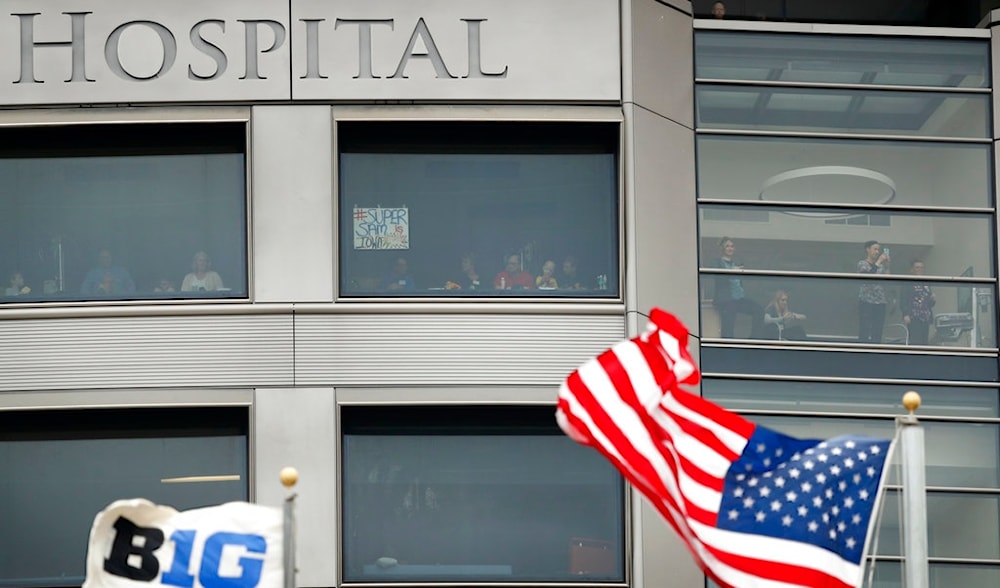Millions of Americans borrowed $74bln in medical debt in 2024: Poll
Citizens across the United States of all demographic groups relay their concerns as medical care becomes more unattainable, forcing millions into medical debt.
-

In this Oct. 7, 2017, photo, fans watch from the University of Iowa children's hospital during the first half of an NCAA college football game between Iowa and Illinois in Iowa City, Iowa. (AP)
A staggering 12% of adults in the United States—approximately 31 million people—were forced to borrow an estimated $74 billion over the past year to cover healthcare expenses for themselves or a household member, according to the latest West Health-Gallup Healthcare Survey.
The survey, conducted in November 2024 among 3,583 adults, also revealed widespread anxiety about medical costs, with 58% of Americans expressing concerns about falling into medical debt if faced with a major health event.
Young adults, women, and people of color among most impacted
Nearly one in five (18%) young adults aged 18 to 29 reported taking on debt for healthcare, a rate similar to those aged 30 to 49. In contrast, borrowing drops significantly for older Americans, with only 9% of those aged 50 to 64 and just 2% of seniors 65 and older reporting the same struggle.
Women, particularly those under 50, are disproportionately affected. One in five women (20%) under 50 borrowed money for medical expenses, compared to 14% of men in the same age group. The gender gap persists for those aged 50 to 64, with women twice as likely as men to have borrowed, though it disappears among seniors 65 and older.
Meanwhile, black adults (23%) and Hispanic adults (16%) were significantly more likely to report borrowing money for healthcare than White adults (9%). The gap is even more pronounced among those under 50, where 29% of Black adults said they had to borrow, compared to 19% of Hispanic adults and 14% of White adults.
The survey also found that having children in the household increases the likelihood of medical debt. Parents with children under 18 were twice as likely to have borrowed money for healthcare in the past year compared to those without children at home (19% vs. 8%).
At least $500 borrowed
Nearly 60% borrowed at least $500 and over half of men borrowed $1,000 or more to cover medical costs, according to the survey.
While women are more likely than men to report borrowing, men tend to take on larger amounts. The financial burden also increases with age—older adults who borrowed typically took on $3,000 or more, compared to a median of $750 for those aged 30-49 and just $300 for young adults under 30.
Even though only 2% of seniors aged 65+ reported borrowing, they often faced high costs, highlighting potential gaps in Medicare coverage, particularly for long-term care. The survey underscores the growing financial strain of medical expenses across different demographics in the US.
Concern looms
A majority of Americans (58%) worry that a major health event could leave them in medical debt, with 28% “very concerned.” Even among seniors aged 65 and older—who are largely covered by Medicare—52% still express concern, reflecting potential gaps in coverage or fears over funding cuts.
Younger adults are even more anxious, with three in five under 65 worried about medical debt. Concerns are also higher among minority groups, with 62% of Black adults and 63% of Hispanic adults expressing worry, compared to 56% of White adults. Women (62%) report greater concern than men (54%).
Financial anxiety over healthcare costs persists across income levels, affecting over 60% of households earning up to $120,000 annually. Even among those making $180,000 or more, 40% still share these concerns. The findings highlight the deep-rooted fears surrounding medical expenses in the US even for those with insurance.

 4 Min Read
4 Min Read








